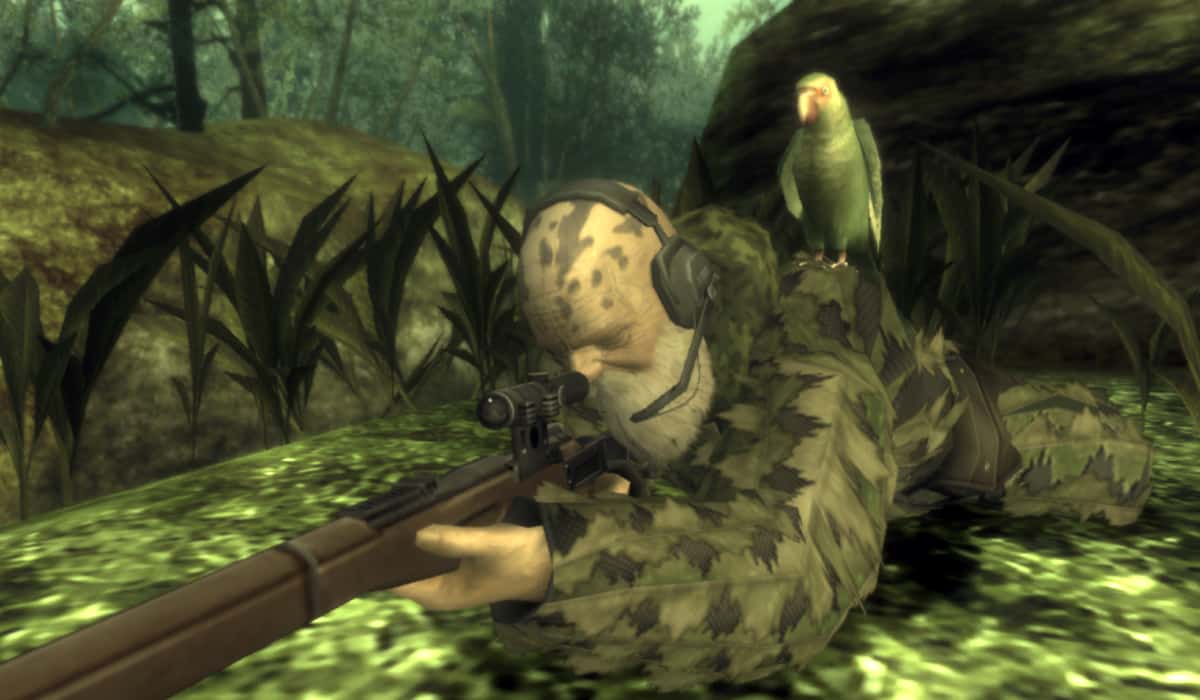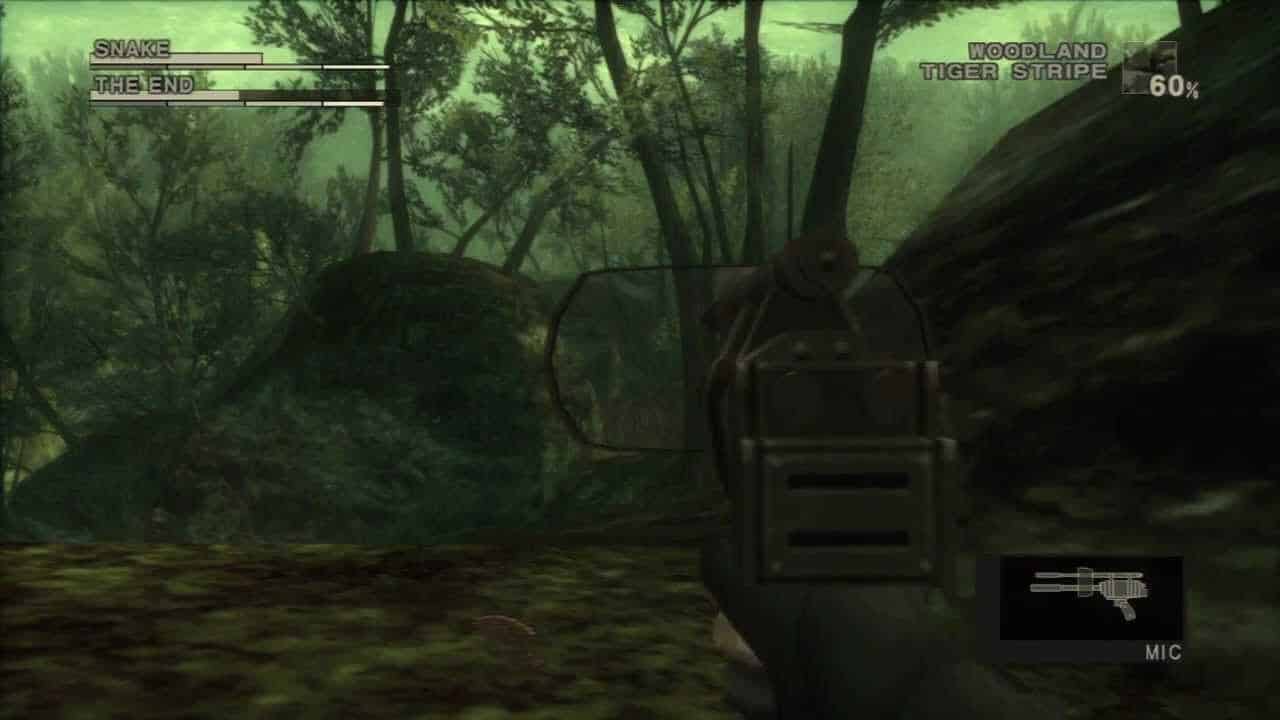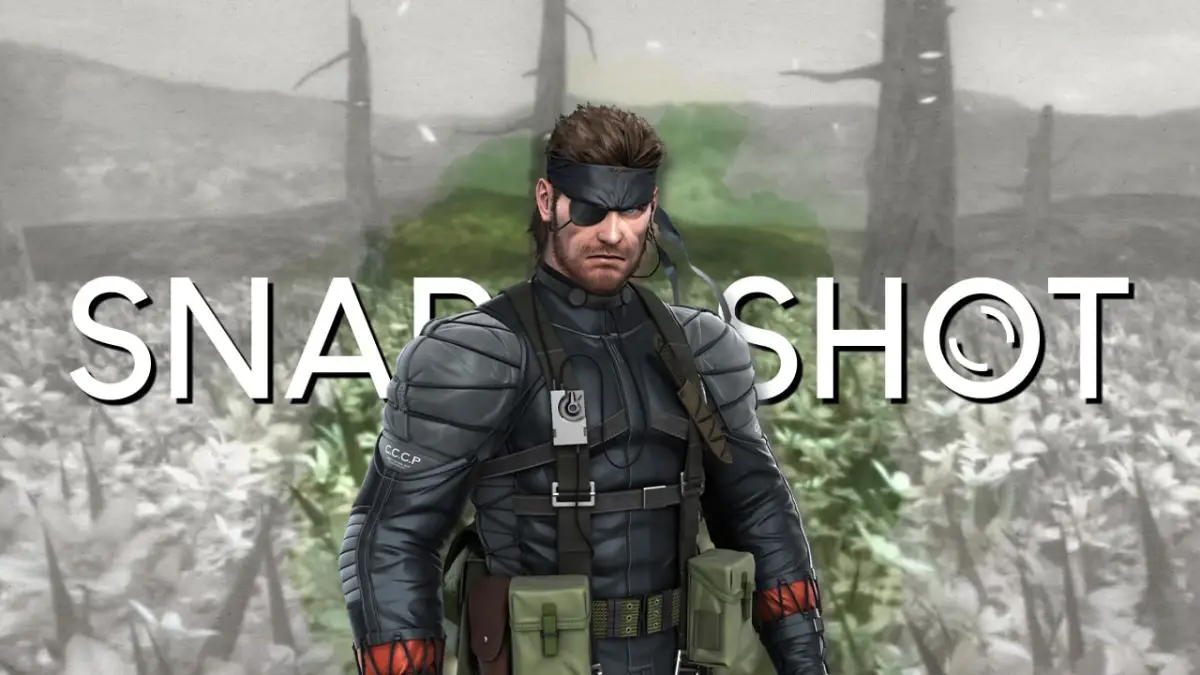This article contains spoilers for Metal Gear Solid 3: Snake Eater.
To be perfectly honest, I could have easily filled this entire column, in which I chronicle individual moments in games worth unpacking and celebrating, with situations just pulled from the games of Hideo Kojima. Hell, I could easily spend several months just documenting those found throughout 2004’s Metal Gear Solid 3: Snake Eater. But for the sake of brevity, I’m just going to focus on a single encounter that showcases a kind of sandbox creativity that you’d be surprised to see in a game in 2020, let alone one from over 15 years ago. It also exemplifies how, despite making games that can sometimes feel like films, Kojima still understands the concept of play as well as anybody.
Naked Snake goes through a lot in the opening few hours of Metal Gear Solid 3 as you attempt to find the defecting Russian scientist Sokolov and help escort him across the Iron Curtain. You get beat up by your mentor, have a front-row seat to a detonating nuke, get confronted a man who could literally control bees, sit through cutscenes and Codec conversations that last about as long as an episode of a television show, possibly dabble in creating some nasty little time paradoxes, and learn a bit of the Cyrillic alphabet during every screen transition. But there was no way to know that everything you’d been learning, all of the equipment you’d been collecting, and the techniques you’d been experimenting with would all come to a head in a single free-flowing exam in the form of a boss fight.
For all intents and purposes, The End is already dead. Constantly referred to by his comrades as “The Father of Modern Sniping,” the legendary tactician is now a 100-year-old man who appears to be comatose in his wheelchair. But your Codec pals continually remind you of just how dangerous the man is. You’re told that he doesn’t need a spotter because he has the forest on his side. As someone who’s been subsiding on whatever critters might scamper by, you can relate. What’s more, as your confrontation begins, The End’s dialogue shows that this battle is the period at the end of his life’s sentence. “I beg of you. Grant me the strength to take this final prey. Let me linger in this world just a little longer,” he says to Snake and, seemingly, God itself.

Part of what makes this fight so memorable is that it initially begins with a feeling of complete and utter hopelessness. It seems like The End is a ghost, and no matter what you do or how well you hide, he’ll be able to take pot shots at you. After all, there are almost 40 separate locations he might be hiding in across the three maps. This is heightened by the fact that he blends into the environment in an almost-supernatural manner. At this point, your survival is fully dependent upon your wits, creativity, and being able to exploit the tools at your disposal to give you even the slightest advantage.
A keen sense of perception comes in handy during your tussle with The End. If you get shot with one of his tranquilizer darts, its placement on your body will indicate the exact direction the shot came from. Likewise, if you spot The End’s parrot, that means he’s somewhere nearby. You can utilize your AP Sensor to detect nearby movement, Thermal Goggles to follow his footsteps and see his heat signature when you’re near, or use the Directional Microphone to pick up his labored breathing. The lens on his rifle will even glint off the sunlight, occasionally cluing you into his position. The thing that makes all of these options so satisfying is their underlying logic — they all make sense as rules and functions in the world.
Even having played through the game several times throughout the years, going back to it recently reminded me just how deep and tense the game of cat and mouse with The End truly is. You have to micromanage swapping out camo, eating to ensure that your stamina remains high, and exploring the maps for ammo and additional weapons, all while trying to spot the photosynthetic sniper and hopefully sneak up on him before he can spot you. Even after all of these years, there are moments in the battle where it seems like you’re genuinely going up against another player. It exudes a similar tension to something like from DayZ or Escape from Tarkov.

Never one to shy away from breaking the fourth wall, Kojima included a handful of “alternative” methods in which you could dispatch with The End. The first comes earlier in the game, after you watch The Boss, Volgin, and the other Cobras all have a quick chat on the docks. After the cutscene ends, and if you’ve managed to find a sniper rifle by that point, you have a brief window to line up your shot and quickly take him out, completely bypassing the iconic boss. Like the other members of Cobra Unit, his body explodes at the moment of death, and in this case, one of the wheels from his chair rockets towards your position and slams into Snake, which never ceases to entertain me.
The other dishonorable method of disposal is to save your progress while you’re in the midst of his boss fight, exit the game itself, change the internal clock on whichever console you’re on to two weeks in the future, and then reload your save. In this artificial two-week span, The End will have expired due to old age, and like the method at the docks, Snake is left with a sense of melancholy ennui that he didn’t face his opponent honorably. Thankfully, a slightly more dignified way to cheat is by opening up your map viewer and entering in the iconic Konami code, which will then show you The End’s current position. It’s rare to find this amount of creativity in a single game, let alone a single encounter.
When you combine all of these elements, you’re left with what I consider to be one of the single most impressive boss battles in video game history. It’s a confluence of narrative, systems, design, and player agency that rewards creativity and the kind of outside-the-box (no pun intended) thinking that Kojima’s series has always prided itself on. It’s also wild to think that immediately following your collision with The End is the iconic climb up “The Ladder” set to the Snake Eater theme song, which is a moment in and of itself worthy of equal praise and analysis. The fact that this was all done in 2004 on the PlayStation 2 remains unreal to me, and it is a true testament of just how ahead of its time Metal Gear Solid 3: Snake Eater was.






Published: Mar 10, 2020 11:00 am